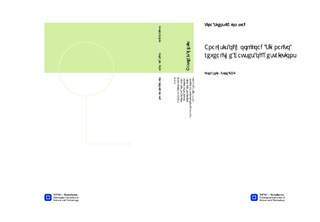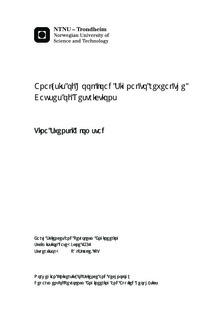| dc.contributor.advisor | Skalle, Pål | nb_NO |
| dc.contributor.author | Glomstad, Tina Svensli | nb_NO |
| dc.date.accessioned | 2014-12-19T12:16:34Z | |
| dc.date.available | 2014-12-19T12:16:34Z | |
| dc.date.created | 2012-11-10 | nb_NO |
| dc.date.issued | 2012 | nb_NO |
| dc.identifier | 566945 | nb_NO |
| dc.identifier | ntnudaim:7547 | nb_NO |
| dc.identifier.uri | http://hdl.handle.net/11250/239861 | |
| dc.description.abstract | Wells that are drilled today are becoming deeper and more complex, and actions to make these wells economically justifiable are desired by oil companies. One method is to reduce the non-productive time during drilling by analysing the hook load response to restrictions in the well. The goal is to recognize abnormal behavior as early as possible to prevent stuck pipe or other incidents that may lead to non-productive time. In present thesis a mathematical model for simulating hook load during normal tripping conditions is made. The model is based on theory about forces acting in the borehole, and properties of the drill string and the wellbore are inserted into it. The goal is to make good hook load simulations for simple tripping conditions, as restrictions most often cause problems during tripping operations. If restrictions were to occur, the changes in hook load during tripping would be identified quickly, and remedies can be started early. A laboratory that simulates tripping out of a nearly horizontal well is buildt and experiments are done. The laboratory experiments are carried out with and without mud flow, to identify also the forces that depends on mud circulation. Washout has been imitated in order to see how restrictions affect the hook load. The model consists of mathematical equations that describe all forces acting on the drill string. The laboratory results were used to adjust the equations, so they match hook load behavior even better. From comparison with the laboratory results it was found that the model creates accurate hook load simulations under simple conditions. Simulations with mud flow during tripping were inaccurate because the forces that occur during circulation were poorly mathematically described in the model. It is not possible to run real time drilling data in the model to see if the model is realistic because block position measurements are missing and some measurement rates are too low, so the equations in the model is not general enough. With improved position measurements and following adjustments in the model, it is likely that the hook load behavior model could be used to reduce the non-productive time during drilling. | nb_NO |
| dc.language | eng | nb_NO |
| dc.publisher | Institutt for petroleumsteknologi og anvendt geofysikk | nb_NO |
| dc.subject | ntnudaim:7547 | no_NO |
| dc.subject | MTGEOP Geofag og petroleumsteknologi | no_NO |
| dc.subject | Boreteknologi | no_NO |
| dc.title | Analysis of Hook load Signal to reveal the Causes of Restrictions | nb_NO |
| dc.type | Master thesis | nb_NO |
| dc.source.pagenumber | 88 | nb_NO |
| dc.contributor.department | Norges teknisk-naturvitenskapelige universitet, Fakultet for ingeniørvitenskap og teknologi, Institutt for petroleumsteknologi og anvendt geofysikk | nb_NO |

